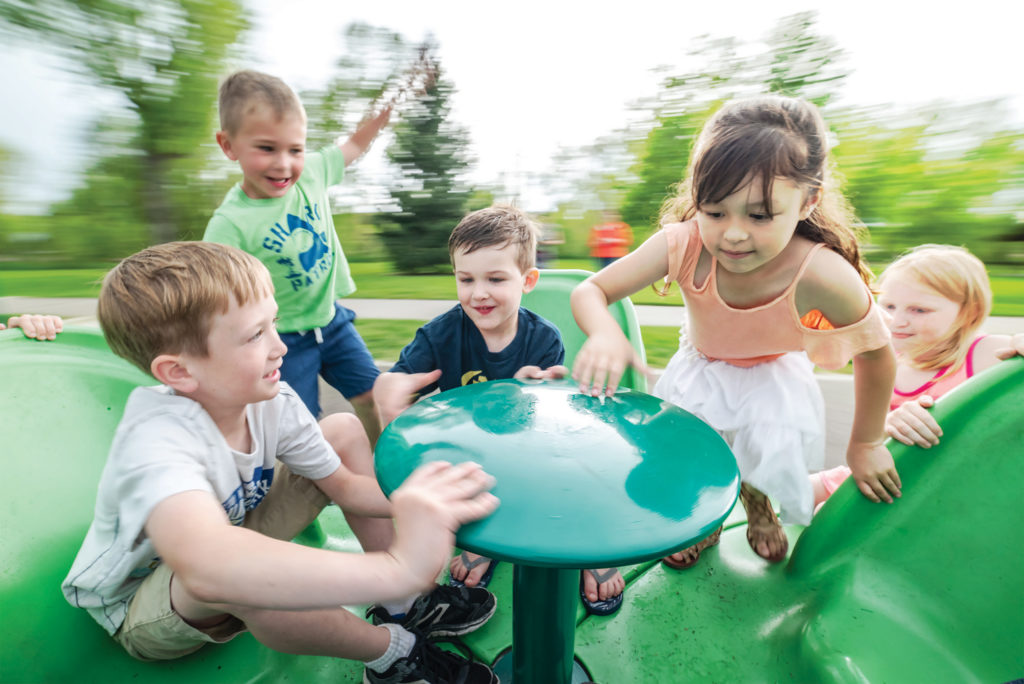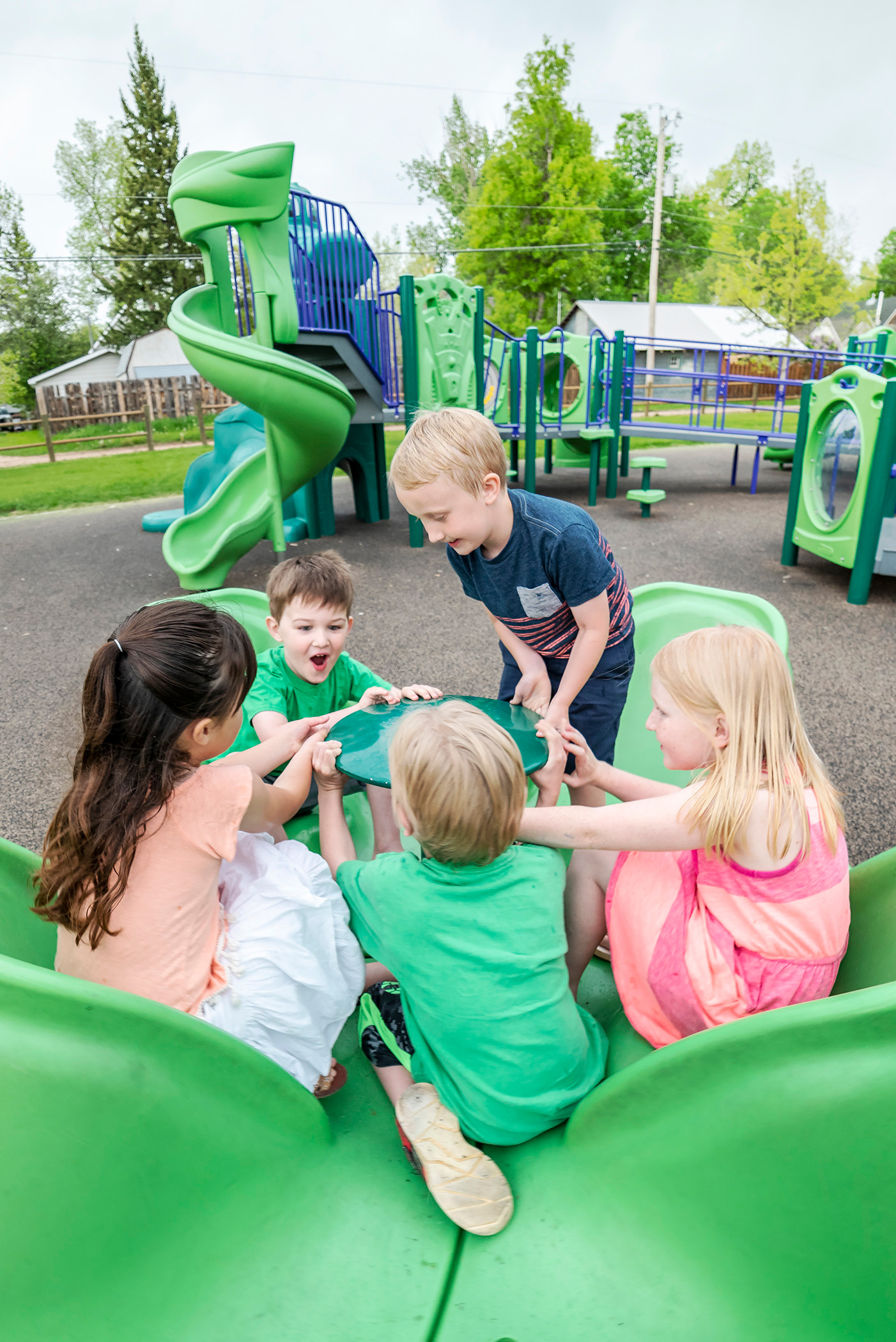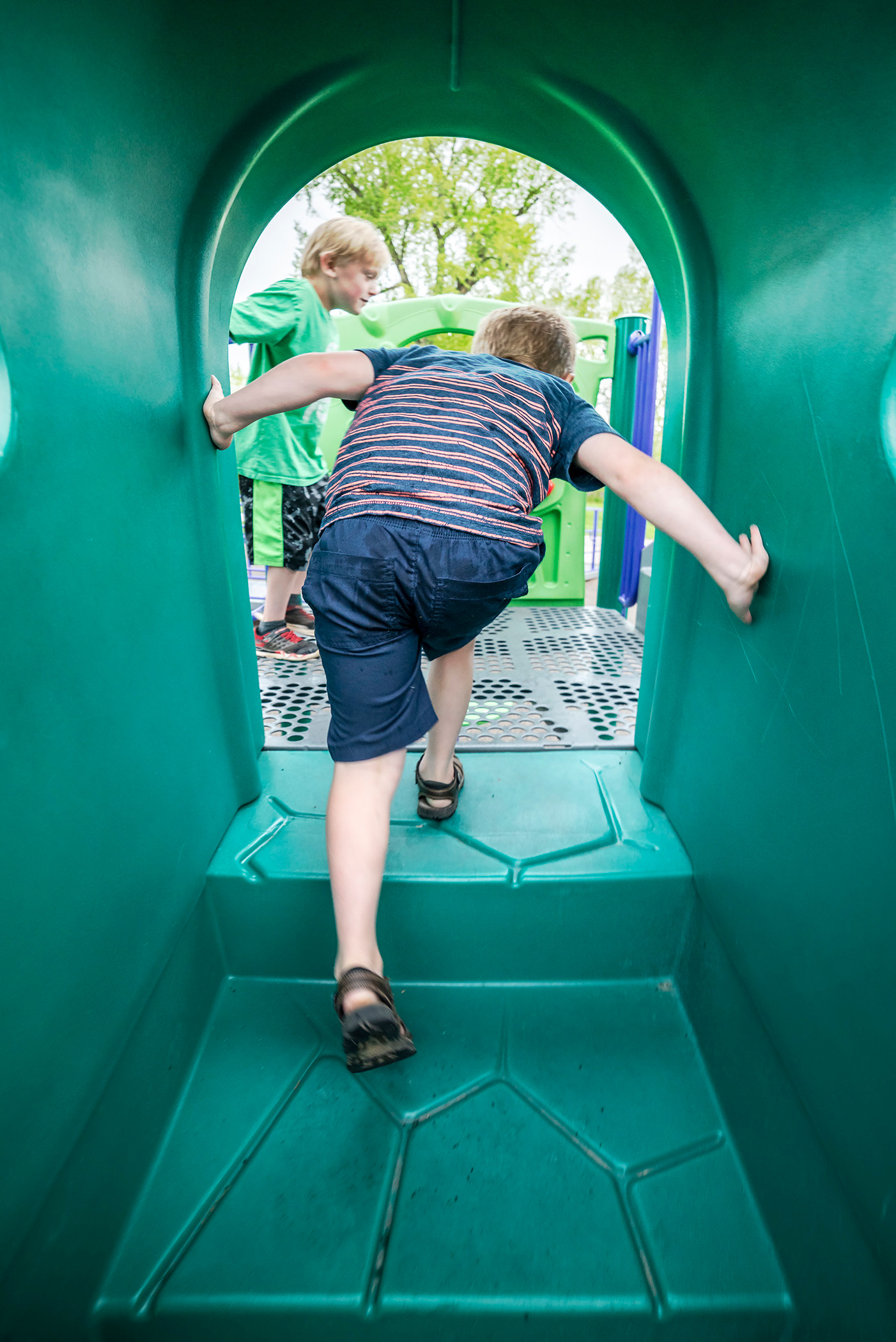It’s amazing what kids will learn at the playground. Have you ever sat on the bench and watched the complex, little ecosystem of everything going on around you? It’s easy to miss the action if your eye stays trained on the surface. Yes, the monkey bars help build body strength and the slide helps develop a sense of judgement. But, watch closely! There is more going on than what meets the eye. The monkey bars can turn into a ladder to help them cross a river filled with crocodiles below. And the slide may be a secret tunnel to a new world.
“Playgrounds are the core of a community and one of the few places where children of any race, age, economic status and ability can socialize and play,” said Lori Dilbert, President of The Kenadi Jean Weis Foundation. “Playgrounds are an ideal environment for supporting overall healthy development, as well as getting them outside to have fun and make new friends.”
Not only are children free to use their imagination, they are learning a lot of skills that go beyond textbook learning. What does it mean to be kind? How can you solve problems with other kids you may not know?
“For developing children, play is learning. They learn to solve problems, make decisions, persevere, and interact with the people and objects in the environment,” said Lori “They develop language, symbolic thinking, social skills, and motor skills. Many studies show the benefits of physical activity for children is that they are healthier, have higher self-esteem and are better prepared to learn.”
And Perry Mader, the Parks & Recreation Director for the City of Spearfish agrees. “Playgrounds and parks give kids a sense of community. It’s a different kind of interaction when it’s face-to-face.” Perry explains that features at the playgrounds are not only interactive for kids, but educational, too – making the playground more than a place to run off extra energy.
Albert Einstein said that, ‘Play is the highest form of research’ so let’s all get back to nature and play! Talk to your community’s Parks & Recreation team to see where all the parks in your town are located. Try a new one every once and a while, and see new faces! You may even meet some new friends along the way.
Not all playground equipment is made for all kids. In fact, most injuries happen when children fall off equipment designed for older kids.
“With playgrounds, there are different classifications–ages 2-5 and ages 5-12,” explained Scott Anderson, the parks division manager for the City of Rapid City. “The dimensions of the play equipment is different; you’ll see that features for younger kids are lower to the ground and mostly for hand-eye coordination–more interactive activities that give them a range of motion and balance. Older children will have the monkey bars and the more physical activities that are allow more exertion.”
Here are a few guidelines will keep your little one safe.
Children 5 to 12 have the arm strength and muscle coordination to play on horizontal bars, climbing equipment, swings, seesaws, and tall slides.
Kids 2 to 5 are weaker and have a higher center of gravity than older children, so look for equipment with small steps and short railings. Safe choices include crawl tunnels, tot swings, flexible spring rockers, and slides that are no taller than 4 feet.
Children 2 and under really don’t belong on regular playgrounds. Instead, look for a specially designed toddler playground with infant-safe swings.
- Take your kids to playgrounds with shock-absorbing surfaces such as rubber, synthetic turf, sand, pea gravel, wood chips or mulch. If your child falls, the landing will be more cushioned than on asphalt, concrete, grass or dirt.
- Dress appropriately for the playground. Remove necklaces, purses, scarves or clothing with drawstrings that can get caught on equipment and pose a strangulation hazard. Even helmets can be dangerous on a playground, so save those for bikes.
- Teach children that pushing, shoving or crowding while on the playground can be dangerous.
Sources: National Program for Playground Safety at the University of Northern Iowa, safekids.org



